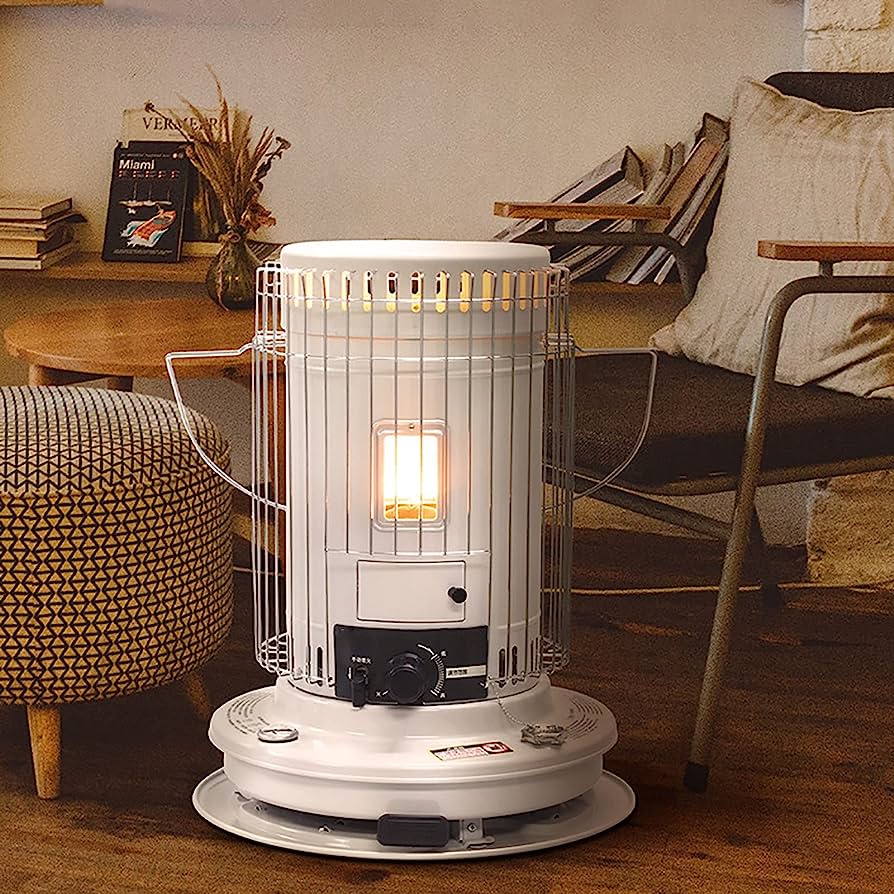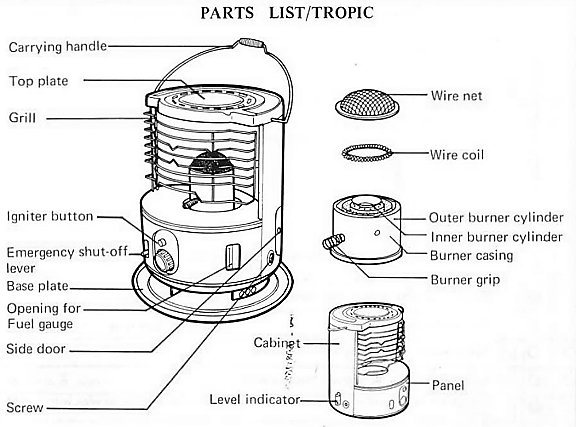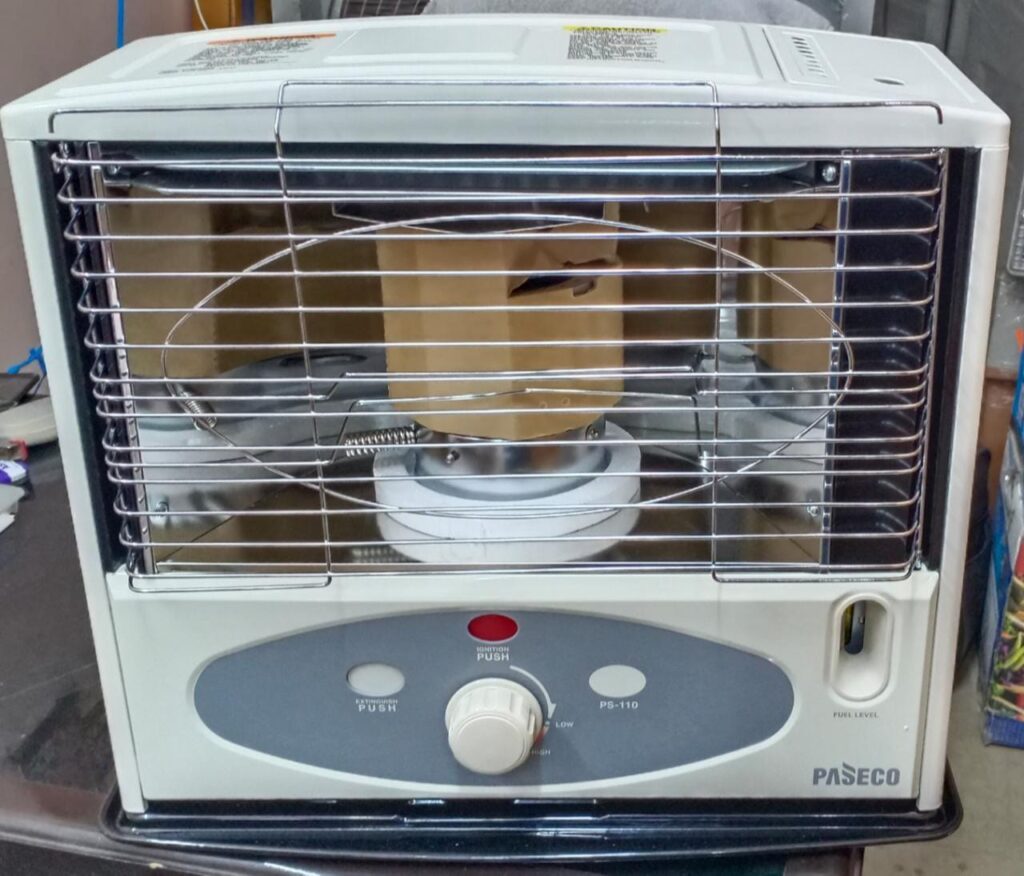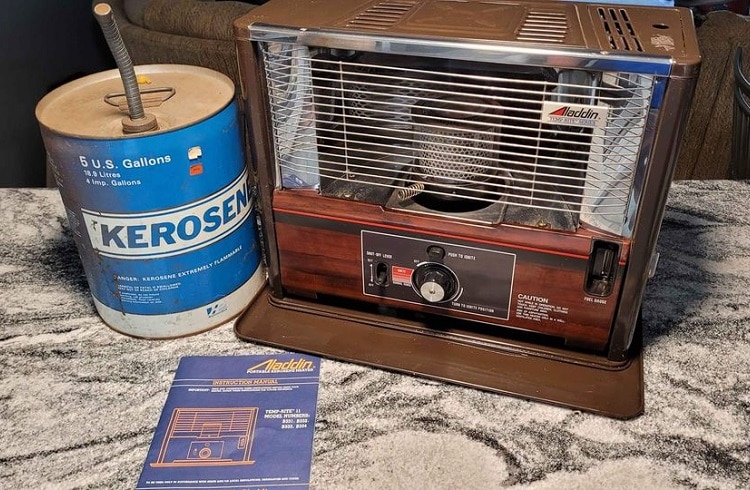As the colder months approach, finding effective heating solutions becomes a top priority for many homes. Kerosene heaters have long been a popular choice because of their efficiency and portability, but using them indoors requires careful attention to safety measures. In this guide, we’ll understand how they work, the different types available, and the factors to consider when choosing the right one for your indoor space. While these heaters provide effective heating, it is important to remember that using a kerosene heater indoor comes with some risks, especially if not used properly.
Don’t Miss: Food Processor vs Blender: The Kitchen Battle for Culinary Supremacy

We’ll provide you with a step-by-step guide on how to safely operate a kerosene heater indoors, ensuring your comfort without compromising on your well-being. Plus, we’ll highlight essential safety tips, best practices, and common issues to note, giving you the confidence to use your kerosene heater responsibly.
How do indoor kerosene heaters work?
Indoor kerosene heaters use a simple yet effective mechanism to generate heat and heat your living space. Understanding how these heaters work is essential to their safe and efficient operation. Let us go through the basic mechanics and components of indoor kerosene heaters: Let me explain.

Burner Assembly
At the core of an indoor kerosene heater is the burner assembly. It consists of a fuel tank, a wick, and a burner unit. The fuel tank holds kerosene, which is drawn through the wick to the burner unit.
Wick & Wick Adjustment Knob
The wick acts as a medium of fuel delivery. It slowly moves the kerosene from the fuel tank to the burner unit. The height of the wick can be adjusted to control the intensity of the flame and consequently, the amount of heat generated.
Burner Unit
The burner unit is where the kerosene is vaporized and ignited to produce heat. It usually consists of a combustion chamber and a flame spreader. The combustion chamber contains the burning kerosene, while the flame spreader evenly distributes the heat generated.
Ignition System
Most indoor kerosene heaters use a manual ignition system, where a match or lighter is used to ignite the wick and start the flame. Some modern models may feature an electronic ignition system for added convenience.
Fan
Sometimes indoor kerosene heaters come equipped with a built-in fan or have a provision to connect an external fan. The fan helps to circulate the hot air, which improves the distribution of heat in the room and the overall efficiency.
Benefits of Indoor Kerosene Heaters
Indoor kerosene heaters offer several advantages that make them a popular choice for heating indoor spaces. Understanding these benefits can help you assess whether they are the right heating option for your needs. Let me count the points for you.

Portability
Indoor kerosene heaters are generally lightweight and portable, allowing you to move them from room to room as needed. This mobility makes them versatile for heating different areas of your home or even taking them with you on camping trips or other temporary locations.
Heating Capacity is Great
Kerosene heaters are known for their ability to generate substantial heat output. They are particularly effective at heating large spaces, making them suitable for open floor plans or dry areas where other heating methods may have difficulty distributing heat evenly.
Affordability: Everyone Can Afford
Kerosene is often less expensive than other fuel sources such as electricity or propane, making indoor kerosene heaters a cost-effective option for heating. Kerosene’s availability and relatively low cost make it an attractive option for those who want an efficient heating solution without breaking the bank.
Efficiency: Best For the Environment
Indoor kerosene heaters are designed to provide efficient heat output. With proper use and maintenance, they can maximize fuel efficiency, reduce overall consumption and minimize waste. This efficiency translates into a longer burn time, so you can enjoy longer periods of heat without frequent refueling.
Independence from electricity
An important advantage of indoor kerosene heaters is their independence from electricity. During power outages or in locations without access to reliable electricity, kerosene heaters can still provide a reliable heat source while ensuring your comfort and safety.
Quick heating Because Of High Efficiency
Indoor kerosene heaters usually heat up quickly, so you can feel the heat almost immediately after ignition. This quick heating capability is especially useful in cold weather when you need intense heat to create a comfortable environment.
By considering these benefits, you can determine whether an indoor kerosene heater best suits your heating needs and preferences. However, it is essential to weigh these advantages against safety considerations and ensure that you follow proper usage guidelines to maintain a safe and warm environment.
Safety is the Key
When using an indoor kerosene heater, prioritizing safety is of utmost importance. Following proper safety guidelines ensures your and your family’s well-being. Here are some key security considerations to keep in mind:

Maintain Ventilation
Adequate ventilation is important when using an indoor kerosene heater. These heaters produce carbon dioxide as a by-product of combustion, which can be harmful if not properly ventilated. Make sure there is adequate fresh air circulation in the room or area where the heater is used. Open windows or use an exhaust fan to facilitate proper airflow and prevent carbon monoxide build-up.

Fuel Storage and Handling
Proper fuel storage and handling is essential for safety. Store kerosene in approved containers away from heat sources, flames or ignition sources. Follow the manufacturer’s directions for refueling the heater, ensuring that leaks are cleaned up immediately and that no fuel remains in contact with the heater.
Carbon Monoxide Detection: Don’t Suffocate
Install carbon monoxide detectors around indoor kerosene heaters. These detectors can give an early warning if carbon monoxide levels become dangerous. Regularly test and maintain detectors according to the manufacturer’s instructions.

Fire Hazard
Keep flammable materials, such as drapes, furniture, or clothing, a safe distance from the heater. Install a clear space around the heater to prevent accidental contact and reduce the risk of fire. Never leave a heater on, and be sure to turn it off when not in use or before bedtime.

Regular Maintenance is the Only Way
Maintain your indoor kerosene heater by following the manufacturer’s recommended maintenance schedule. This may include cleaning the wick, inspecting and replacing parts, and ensuring the proper functioning of safety features. Regular maintenance helps prevent malfunction and ensure the safe operation of the heater.

Very dangerous for children and pets
Keep children and pets away from the heater to avoid accidental burns or injury. Educate family members about the potential hazards associated with the heater and establish clear safety guidelines for its use.
Familiarize yourself with the User Manual
Read and understand the user manual provided by the manufacturer. It contains essential safety instructions specific to your indoor kerosene heater model. Following the instructions in the manual will help you operate the heater safely and address any concerns or questions you may have.
Choosing the right indoor kerosene heater
Selecting the right indoor kerosene heater is essential to ensure optimum performance, safety and efficiency. Consider the following factors when choosing a heater that meets your specific needs:
Heating Capacity
Determine the size of the space you want to heat. Look for a heater with the appropriate heating capacity for the square footage of the room or area. Consider factors such as insulation, ceiling height and drafts that can affect a heater’s ability to heat the space efficiently. You can understand heater’s heating capacity with ‘BTU’ – Higher is better.

Safety Features
Prefer heaters with strong safety features. Look for features such as automatic shut-off mechanisms, flame-out sensors, and tip-over protection. These features increase safety and reduce the risk of accidents or hazards.
Wick Quality
The quality of the wick affects the performance and longevity of the heater. Choose a high-quality wick heater that offers efficient fuel combustion, easy adjustments, and durability. Choosing a heater with a replaceable wick ensures the longevity and continued performance of the appliance. Wick quality also affects fuel efficiency which means you get the most out of the fuel.
Noise Level
Some indoor kerosene heaters can generate noise during operation. If noise is a concern, look for models with noise reduction features or specially designed for quiet operation. To get in light you could consider user reviews.
Always Go With Brands…
As using kerosene heaters indoors combine with safety brand reputation and reviews are very important. Research the reputation of the manufacturer and read customer reviews before making a purchase. Look for well-established brands known for manufacturing reliable and high-quality indoor kerosene heaters. Good brands also have proper warranty and customer support and they will also give you free installation may be for first time you may need to spend couple of bucks extra but in log run it will be praiseworthy.

Installation and Maintenance
As using kerosene heater indoors brings risk of fire hazard you have to pay attention to proper installation and regular maintenance which also ensure optimal performance and longevity:
Practice Reading Of User Manual
If brand doesn’t offer installation then first you should read the instructions and safety precautions in the provided user manual. The manual will guide you through the installation process.
Ensure Proper Placement
Any kind of heater with flammable substance should not be placed in flammable places. Choose a stable, non-flammable surface away from combustible materials. Ensure that there is ample space around the heater for proper airflow and ventilation. Follow the clearance requirements as mention in user manual to prevent fire hazards.
Fueling
The refueling process could vary from manufacturer to manufacturer. Read the instructions from the user manual. Use only the recommended type of kerosene fuel and store it in approved containers. Avoid overfilling the fuel tank and wipe up any spills promptly. Always refuel the heater in a well-ventilated area and away from open flames or ignition sources.

Wick Maintenance
If you clean and maintain wick regularly your heater performance will stay constant. Over time, the wick may become dirty or worn, definitely affect the heater’s performance. Regularly inspect and clean the wick according to the manufacturer’s recommendations if needed replace the wick when necessary to ensure efficient fuel combustion and consistent heat output.

Keep the Heater Neat and Clean
Keep the heater clean to maintain its efficiency. Regularly remove dust, debris, or any accumulated residue from the exterior and components of the heater. Use a soft brush or cloth to clean the surfaces, and avoid using abrasive materials that may damage the heater. Additionally check whether it’s leaking or not, inspect the cords, plugs, and switches for any signs of damage or wear. If you are not skilled enough use a help of a professional.
Alternatives to Indoor Kerosene Heaters
If you’re not getting confident enough of having a kerosene heater indoor then you have few options which are efficient, effective, cheap and user friendly.
Electric Space Heaters
Electric space heaters are a popular choice for indoor heating. They are easy to use, portable, and require no fuel storage. Electric heaters come in various types, such as ceramic, oil-filled, or infrared heaters, each offering different features and heating methods. Consider factors like energy efficiency, heating capacity, and safety features when selecting an electric space heater.

Gas or Propane Heaters
Gas or propane heaters provide another alternative to kerosene heaters. These heaters utilize natural gas or propane as fuel sources, offering convenience and efficient heating. They are commonly available in vented or vent less models. Vent less models require no external ventilation but should be used with caution to ensure proper indoor air quality.

Wood-Burning Stoves or Fireplaces
Wood-burning stoves or fireplaces provide a cozy and traditional heating option. They can be used as a primary or secondary heat source, depending on the size of the space. Wood-burning stoves require a supply of firewood and proper chimney maintenance to ensure safe operation.

Conclusion:
Indoor kerosene heaters can provide effective and efficient heating solutions for various indoor spaces. However, it’s crucial to prioritize safety, proper installation, and regular maintenance when using these heaters. When choosing an indoor kerosene heater, consider the factors we have discussed earlier. With proper decisions, following safety guidelines, and properly maintaining your indoor kerosene heater or exploring alternative options, you can enjoy a warm and cozy indoor environment during colder months while ensuring the well-being and safety of yourself and your household.
